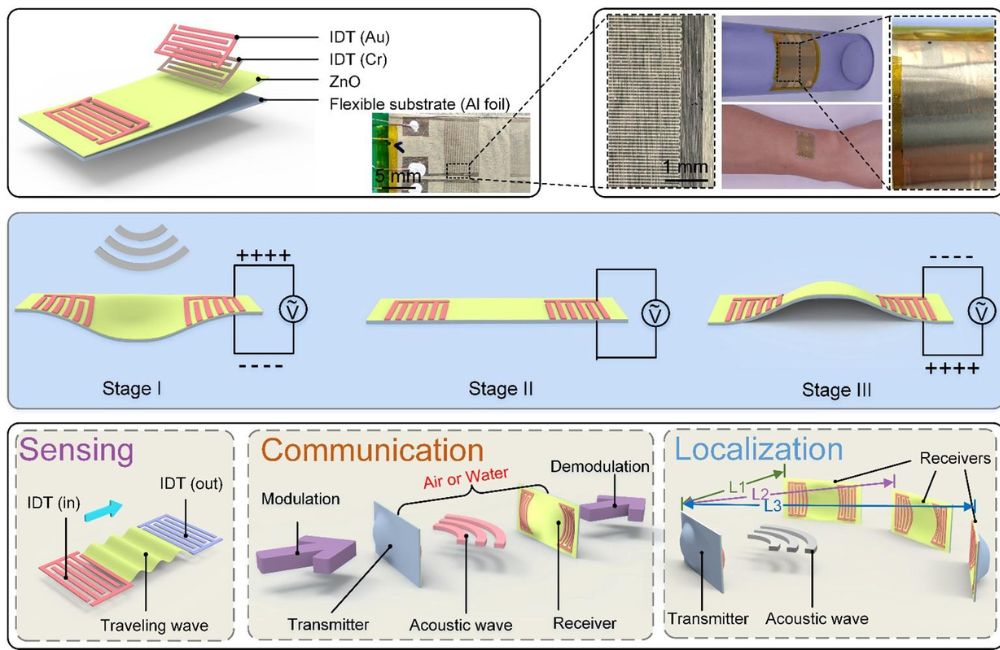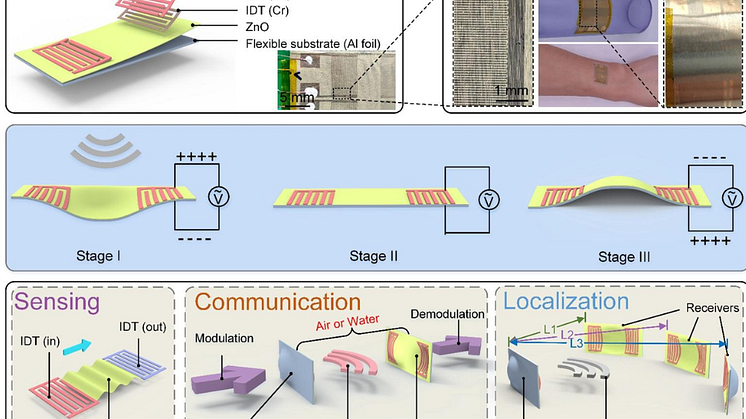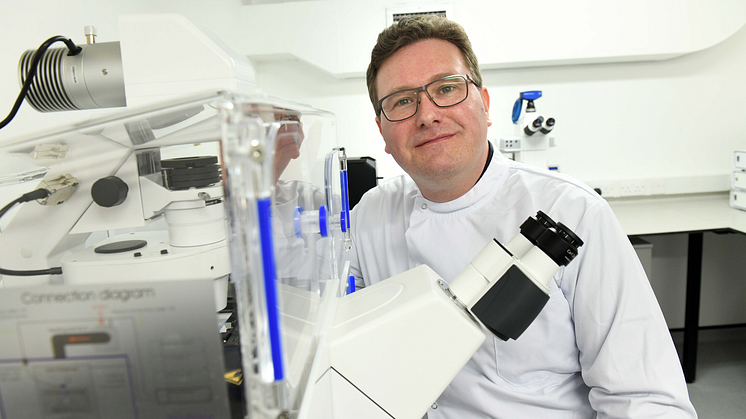
Press release -
Sensors built into wearable patches could signal the future
New research involving a Northumbria University Professor has developed a wearable sensor capable of wirelessly transmitting information via acoustic waves through air and water.
With enough flexibility to be fitted into a wearable patch, Professor Richard Fu and his research partners - led by Professor Jin Xie at Zhejiang University in China - believe the flexible acoustic wave device could have multiple uses in healthcare and the water industry.
Interest in advancing the capabilities of flexible and wireless sensors is at an all-time high, thanks to their widespread uses in wearable electronics such as smart watches and internet of things (IoTs) or smart home devices, which are now commonplace across the world.
However, many sensors require additional antenna to achieve wireless or real-time functions, which has an impact on their size. And the performance of those operated with radio frequency signals (RF) has been shown to deteriorate when used in water and inside metal.
To find a solution, research teams led by Professor Fu and Professor Xie have worked together to identify surface materials which are flexible enough to withstand tiny vibrations capable of transmitting and receiving information, in order to develop their device as a wearable patch.
They believe the design is multifunctional and could be used, for example, to wirelessly transmit information on a patient’s heart rate during hospital treatment. The sensors have also proven effective in tests through water and could have practical applications including diagnosing the location of a maintenance issue, such as a blockage, from within a metal water pipe.
A research paper recently published in the international scientific journal, Advanced Functional Materials, describes the detail of the ground-breaking work by both research teams.

Professor Fu explained: “We feel it is a real breakthrough to have used a multifunctional and flexible sound wave device, operated based on electricity resulting from pressure and heat (piezoelectricity), for achieving integrated sensing, acoustic communication and positioning functions."
Professor Xie added: “Based on this new methodology, this type of sensor could serve as an acoustic transmitter and receiver (transceiver) without any additional antenna, thus reducing the complications and size of the system. Because of the low velocity of the acoustic waves, the acoustic ranging and positioning can be directly performed, significantly improving precision when compared to those based on Bluetooth and Radio Frequency Identification (RFID).”
The research was supported by students from Zhejiang University during a visit to Northumbria University, and has received some support from the Royal Society International Exchange Project.
Professor Fu, whose key research area is in smart materials, thin film and microsystems, has been working with collaborators and researchers from Zhejiang for a number of years. Their research has also produced papers published in prestigious scientific journals including Nano Energy, ACS Applied Materials & Interfaces, ACS Sensors, Microsystems & Nanoengineering and Applied Physics Letters.
Dr Richard Binns, Head of Department for Mathematics, Physics, and Electrical Engineering at Northumbria University said: “Collaboration is an important part of the research culture at Northumbria. We work closely with hundreds of partner universities, colleges and schools across the world.
“It’s wonderful to see the strong partnership between Northumbria University and Zhejiang University producing quality research outputs, as well as the benefits of staff and students from both universities working together.”
Full details can be found in the Advanced Functional Materials paper, Multifunctional and wearable patches based on flexible piezoelectric acoustics for integrated sensing, localization and underwater communication.
Northumbria University is ranked 25th in the UK for research power in engineering in the Research Excellence Framework 2021, with 90 per cent of research outputs rated as world-leading or internationally excellent.
Visit www.northumbria.ac.uk/mpee to discover more about the study options available within the department of Mathematics, Physics and Electrical Engineering at Northumbria.
Topics
Categories
UNIVERSITY OF THE YEAR 2022 (Times Higher Education Awards)
Northumbria is a research-intensive modern university with a global reputation for academic excellence. Find out more about us at www.northumbria.ac.uk
--- Please contact media.communications@northumbria.ac.uk with any media enquiries or interview requests ---














